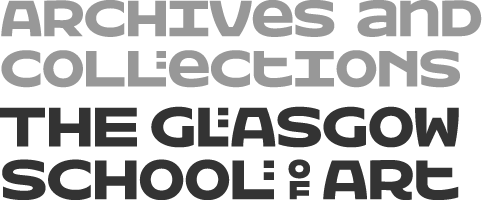Duncan Turner Thomson was born in Huntly, Aberdeenshire on 23rd December 1888, son of Mary-Jane McKean Thomson (née Turner) and Alexander Thomson, a Bachelor of Medicine, General Practitioner. Thomson attended The Glasgow School of Art from 1904 to 1911 and from 1913 to 1914 as a day student and later as an evening student of architecture. Thomson was taught by the first professor of Architectural Design, Eugene Bourdon who is also listed on the School's World War One Roll of Honour.
During his studies Thomson's occupation is noted as an Architect (1907-08), Architect Apprentice (1908-09) and from 1909-14 as an Architectural Draughtsman. His address at that time was given as Hamilton Park Terrace, Hillhead, Glasgow. The Dictionary of the Scottish Architects informs us that between 1906 or 1907, Duncan Turner Thomson was employed and trained as an architectural apprentice at Honeyman Keppie & Mackintosh, and in later years he became an architectural assistant to Mr Peter Macgregor Chalmers at his Glasgow practice.
During the First World War, Thomson volunteered for active service and joined the 9th Battalion (Glasgow Highlanders), in the Highland Light Infantry regiment. At the outbreak of the war Thomson went to France in October 1914, and served as a Private (his regiment number was #118). He was shot by a sniper at Vermelles in France on the 19th of June 1915, and died of his wounds in the General Hospital in Northampton on the 30thJuly 1915. The British Army records indicate that Thomson served as a Lieutenant in the Royal Garrison Artillery Intelligence Corps and was awarded the Victory British Star Medal for his achievements. Duncan Turner Thomson is commemorated on The Glasgow School of Art's First World War Roll of Honour and the UK De Ruvigny's Roll of Honour (1914-1919) and from the records of which (stated below) we can find out more about his personality:
Capt. A.K. Reid wrote: "He was a man for whom I had the highest regard, especially since we came out here, and he was one of the most popular members of the company. His good humour even under the most trying circumstances caused him to be liked by all. He could be trusted at all times to do his duty as a soldier and as a man. I saw him in the Vermelles trenches a few minutes after he was hit, and he left us to walk back to the dressing station with a cheery good-bye to us all"; and one of his comrades, writing to a friend, said: "You doubtless have heard of Duncan Thomson's death. Man! Why is it that all those splendid sportsmen get knocked out, and the rest of us go free. He was an awfully decent chap and I saw quite a lot of him in the G. H. at Dunfermline and in France. A more thorough, straighter, cleaner chap you could not meet. Five of the old 1st Battalion – friends of his - and myself carried the coffin into the Kirk, and than again to the grave. It wasn't a military funeral (military honours having been paid when the body left Northampton), so we could only salute his grave, but if ever a man deserved honours at his graveside he did. We called him 'Sniper' out there, for the simple reason that he was so delightfully cool and casual. He never fired a shot at anything unless he was absolutely certain. If ever you wanted a hot drink. Or anything to cheer yourself up with, you went to Duncan, and sure enough then you got it."[De Ruvigny's Roll of Honour, Vol.1, p. 349].
If you have any more information, please get in touch.
Sources: Ancestry: http://www.ancestry.co.uk; the Dictionary of Scottish Architects: http://www.scottisharchitects.org.uk;Scotland's People: http://www.scotlandspeople.gov.uk.
